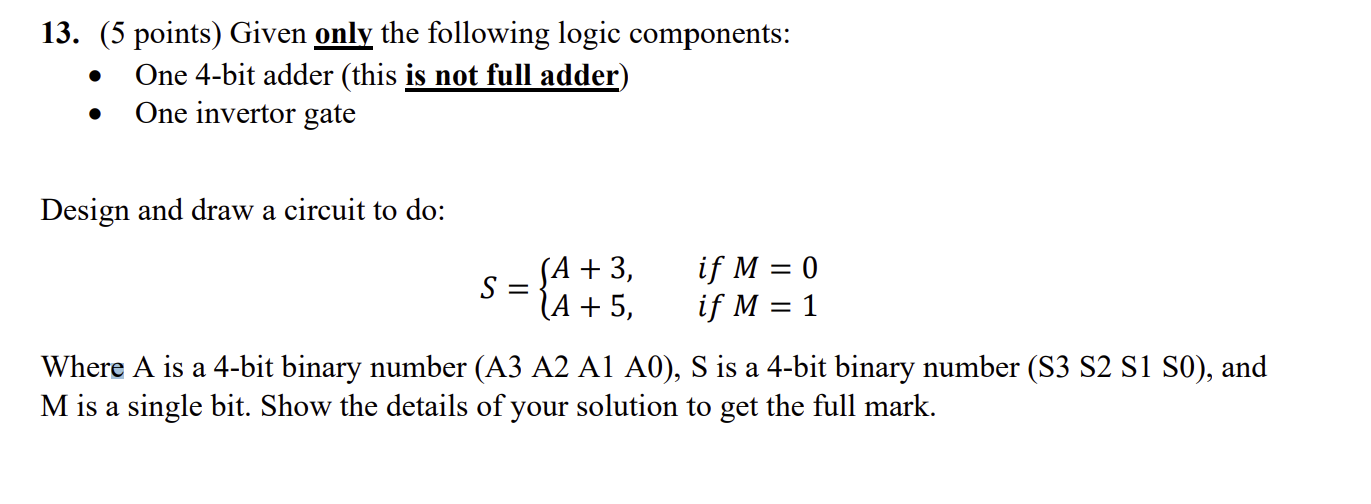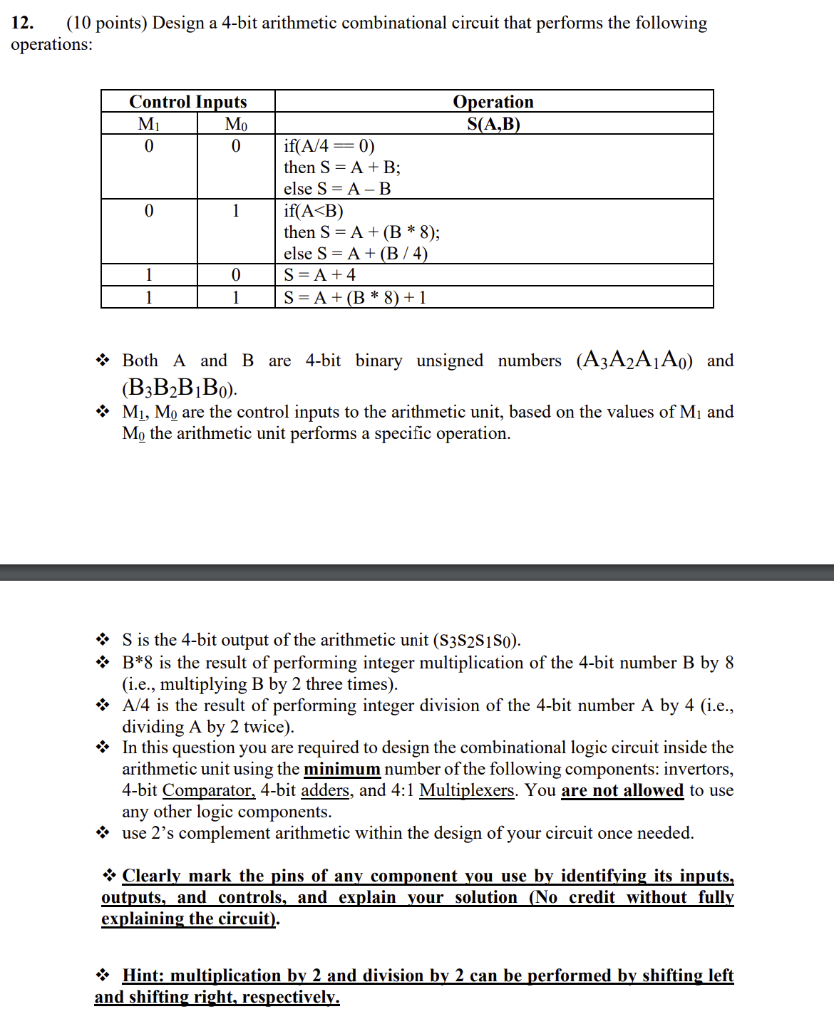Home /
Expert Answers /
Computer Science /
13-5-points-given-only-the-following-logic-components-one-4-bit-adder-this-is-not-full-adde-pa256
(Solved): 13. (5 points) Given only the following logic components: - One 4-bit adder (this is not full adde ...
13. (5 points) Given only the following logic components: - One 4-bit adder (this is not full adder) - One invertor gate Design and draw a circuit to do: Where is a 4-bit binary number ( ), is a 4-bit binary number (S3 S2 S1 S0), and is a single bit. Show the details of your solution to get the full mark.
12. (10 points) Design a 4-bit arithmetic combinational circuit that performs the following operations: * Both and are 4-bit binary unsigned numbers and * are the control inputs to the arithmetic unit, based on the values of and the arithmetic unit performs a specific operation. * is the 4-bit output of the arithmetic unit . * is the result of performing integer multiplication of the 4-bit number by 8 (i.e., multiplying B by 2 three times). * is the result of performing integer division of the 4-bit number A by 4 (i.e., dividing A by 2 twice). * In this question you are required to design the combinational logic circuit inside the arithmetic unit using the minimum number of the following components: invertors, 4-bit Comparator, 4-bit adders, and 4:1 Multiplexers. You are not allowed to use any other logic components. * use 2's complement arithmetic within the design of your circuit once needed. * Clearly mark the pins of any component you use by identifying its inputs, outputs, and controls, and explain your solution (No credit without fully explaining the circuit). * Hint: multiplication by 2 and division by 2 can be performed by shifting left and shifting right, respectively.

